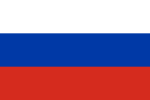
 |
Biscriptality |
Sie sind hier: Homepage > Book

Bunčić, Daniel. 2016. Biscriptality: A sociolinguistic typology. Edited by Daniel Bunčić, Sandra L. Lippert, Achim Rabus. With contributions by Anastasia Antipova, Carmen Brandt, Ekaterina Kislova, Henning Klöter, Alexandra von Lieven, Sandra L. Lippert, Helma Pasch, Achim Rabus, Jürgen Spitzmüller, Constanze Weth. On behalf of the Heidelberg Academy of Sciences, the State Academy of Baden-Württemberg. Heidelberg: Winter (Akademiekonferenzen, 24). 425 pages.
Softcover: 23.5 cm × 15.5 cm (9¼″ × 6″), with 128 black-and-white illustrations, ISBN 978-3-8253-6625-4.
E-book: with 57 black-and-white and 71 colour illustrations, ISBN 978-3-8253-7619-2.
“truly revolutionary work”, “invaluable study on biscriptality”
“captivates by its profound expertise and attention to detail”
(“besticht durch seine profunde Sachkenntnis und seine Liebe zum Detail”)
“a very dense, detailed and innovative book”
“a panorama that impresses by its broadness and saturation with facts”, “remains the best and unsurpassed”
(“впечатляющая по широте и насыщенности фактами панорама”, “останется лучшим и непревзойденным”)
“the first [volume] to both propose a model of research and try to cover all possible cases of contact of writing systems”
(«il primo [volume] che propone sia un modello di studio che tenta di esaurire tutti i casi possibili di contatto tra scritture»)
“This is an extremely important contribution to sociolinguistics, which will become an indispensable reference point in all future works dealing with the sociolinguistics of writing and which will encourage the refreshment of traditional approaches or help to direct new research.”
(“Riječ je o iznimno važnu prinosu sociolingvistici, koji će postati nezaobilaznom referentnom točkom u svim budućim radovima koji se budu doticali sociolingvistike pisanja, potičući osvježavanje tradicionalnih pristupa ili pomažući u usmjeravanju novih istraživanja.”)
Serbs write their language in Cyrillic or Latin letters in seemingly random distribution. Hindi-Urdu is written in Nāgarī by Hindus and in the Arabic script by Muslims. In medieval Scandinavia the Latin alphabet, ink and parchment were used for texts ‘for eternity’, whereas ephemeral messages were carved into wood in runes. The Occitan language has two competing orthographies. German texts were set either in blackletter or in roman type between 1749 and 1941. In Ancient Egypt the distribution of hieroglyphs, hieratic and demotic was much more complex than commonly assumed. Chinese is written with traditional and simplified characters in different countries.
This collective monograph, which includes contributions from eleven specialists in different philological areas (Egyptology, African, Chinese, German, Romance, Slavic and South Asian studies), for the first time develops a coherent typological model on the basis of sociolinguistic and graphematic criteria to describe and classify these and many other linguistic situations in which two or more writing systems are used simultaneously for one and the same language.
 buchhandel.de (€ 52.00),
buchhandel.de (€ 52.00),
 osiander.de (€ 52.00),
osiander.de (€ 52.00),
 ebook.de (€ 52.00),
ebook.de (€ 52.00),
 ZVAB,
ZVAB,
 buch.ch (Fr. 64.90),
buch.ch (Fr. 64.90),
 manz.at (€ 53.50),
manz.at (€ 53.50),
 libristo.pl (zł 261.46),
libristo.pl (zł 261.46),
 bookcity.pl (zł 264.13),
bookcity.pl (zł 264.13),
 bookline.hu (Ft 17,489),
bookline.hu (Ft 17,489),
 cdon.dk (kr 451),
cdon.dk (kr 451),
 adlibris.com (Sweden) (kr 488),
adlibris.com (Sweden) (kr 488),
 adlibris.com (Norway) (kr 438),
adlibris.com (Norway) (kr 438),
 adlibris.com (Finland) (€ 47.50)
adlibris.com (Finland) (€ 47.50)
 wantitall.co.za (R 2,072),
wantitall.co.za (R 2,072),
 Barnes & Noble (USA),
Barnes & Noble (USA),
 amazon.com ($ 65.00),
amazon.com ($ 65.00),
 amazon.co.uk (£ 45.60),
amazon.co.uk (£ 45.60),
 amazon.fr (€ 60.95),
amazon.fr (€ 60.95),
 amazon.it (€ 50.54),
amazon.it (€ 50.54),
 amazon.es (€ 50.54),
amazon.es (€ 50.54),
 amazon.co.jp (¥ 7509),
amazon.co.jp (¥ 7509),
 amazon.com.br (R$ 342.45),
amazon.com.br (R$ 342.45),
 amazon.ca,
amazon.ca,
 russia-amazon.ru or
russia-amazon.ru or
 amazon.de (€ 52.00).
amazon.de (€ 52.00).
The publication was sponsored by the Heidelberg Academy of Sciences and Humanities.
© Copyright Die AutorInnen (Impressum) |